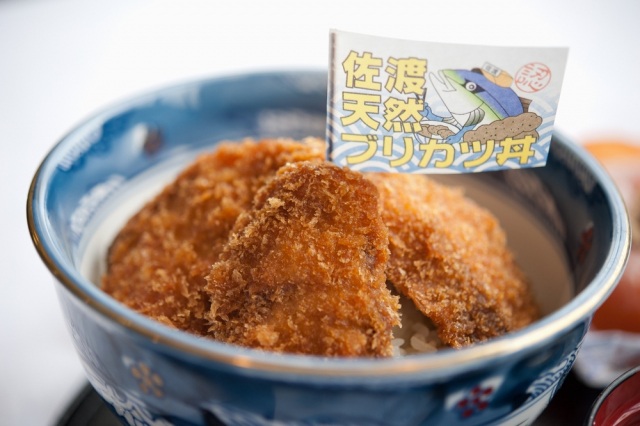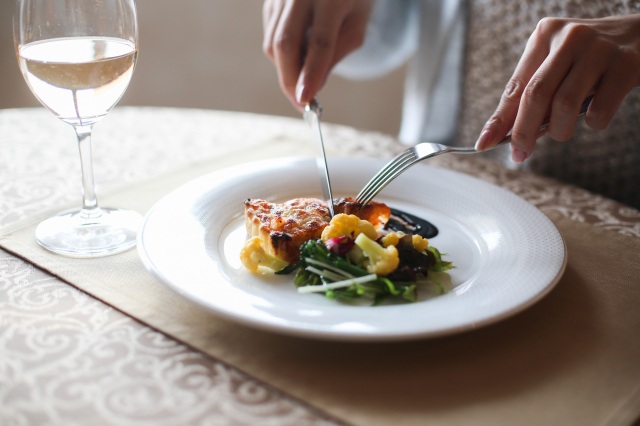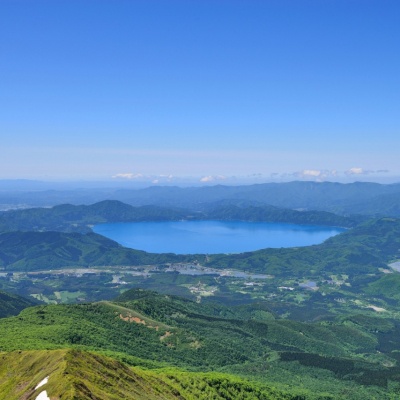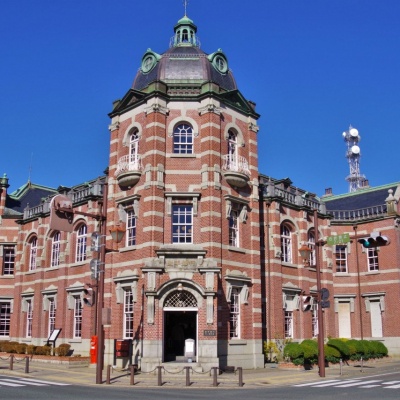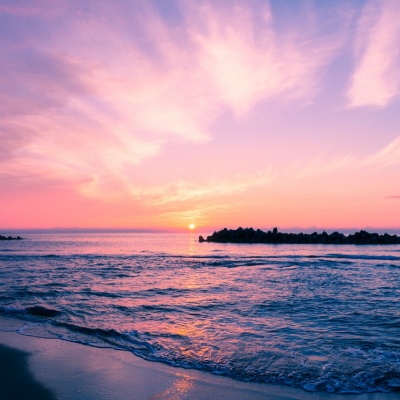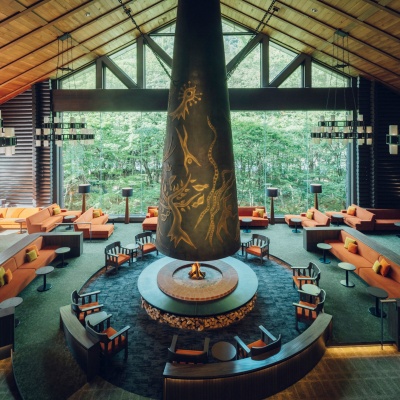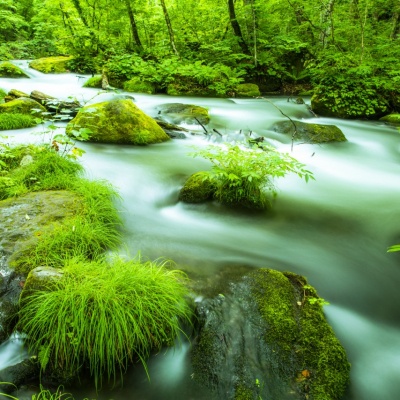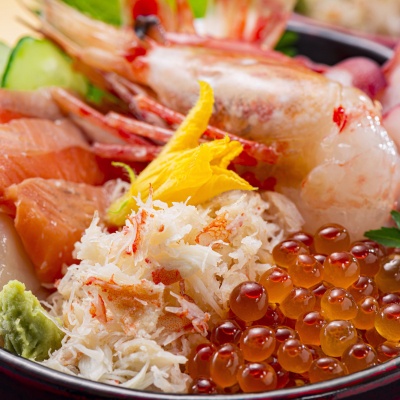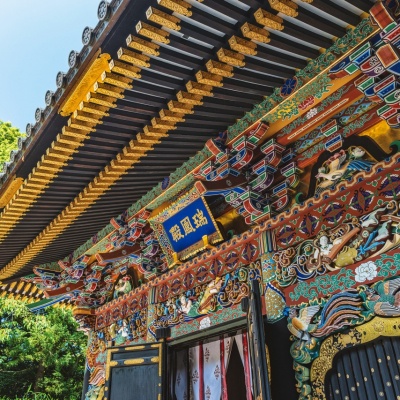The best of Niigata, Yamagata and Akita along the sea of Japan (4 days / 3 nights)
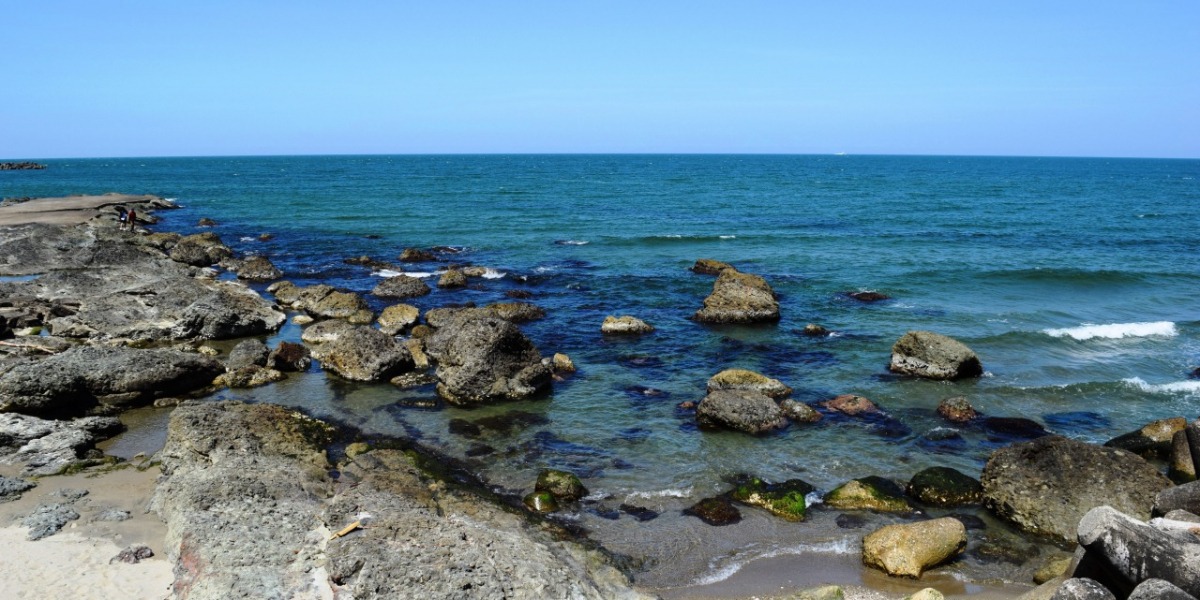
The best of Niigata, Yamagata and Akita along the sea of Japan (4 days / 3 nights)
START
Day1
Sado Gold Mine
Discover the 400-year history of Sado, the island of gold and silver and a nominated candidate site to the UNESCO World Heritage List
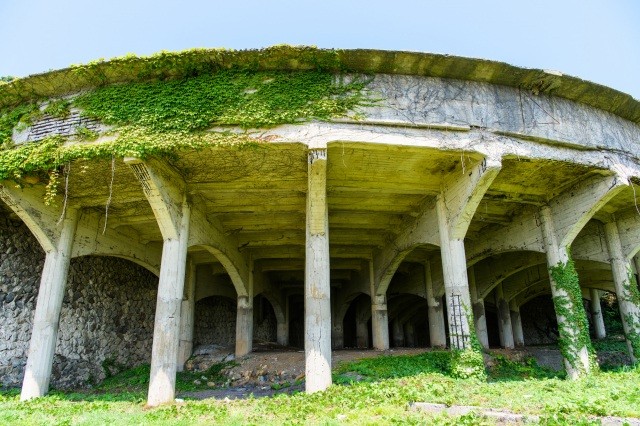
The Sado Gold Mine was the largest gold and silver mine in Japan. It has a 400-year heritage spanning economic ups and downs from its opening in 1601 to its closure in 1989. The industrial remains of the gold mine including tunnels and mining infrastructure are designated both as a national treasure and as part of Japan’s Heritage of Industrial Modernisation. The site is a nominated candidate to the UNESCO World Heritage List.
The remains of the gold mine are a popular location for history enthusiasts. The abandoned buildings remind visitors of Hayao Miyazaki's movie “Castle in the Sky”. Visitors can spend all day here to exploring the site’s photogenic scenery.
The gold mine offers two routes that visitors can explore (no reservation is required, each route takes 30 to 40 minutes). These routes are open every day. Large groups or anyone particularly interested in the history of the mine can make a reservation for one of two guided tours. The guided tours are available from April to November and take about 100 minutes. One is available for groups of over 10 people, the other is only for visitors over 13 years.
The remains of the gold mine are a popular location for history enthusiasts. The abandoned buildings remind visitors of Hayao Miyazaki's movie “Castle in the Sky”. Visitors can spend all day here to exploring the site’s photogenic scenery.
The gold mine offers two routes that visitors can explore (no reservation is required, each route takes 30 to 40 minutes). These routes are open every day. Large groups or anyone particularly interested in the history of the mine can make a reservation for one of two guided tours. The guided tours are available from April to November and take about 100 minutes. One is available for groups of over 10 people, the other is only for visitors over 13 years.
Lunch in Sado city (enjoy the fresh seafood of the season)
Toki Messe (Niigata Convention Centre)
A convention centre on the Niigata waterfront
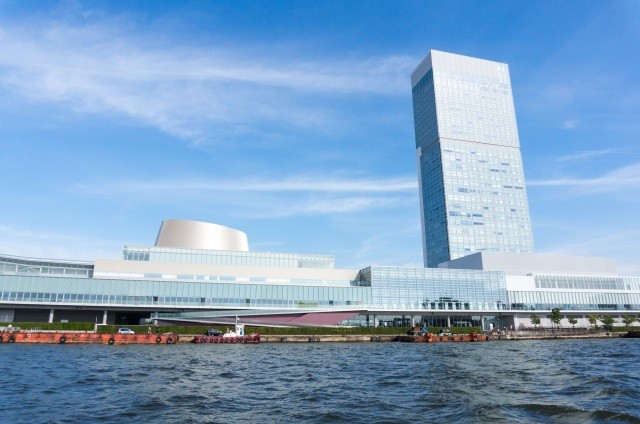
Toki Messe is a convention centre located at the mouth of the Shinano River meeting the Sea of Japan. Architecturally resembling an ocean liner, the urban building is a highlight of Niigata’s waterfront.
The convention centre consists of a large, well-equipped exhibition hall, a variety of 13 conference rooms and an on-site hotel. It offers the perfect facilities to host conferences and parties including accommodation for guests and attendees.
On the 31st floor of the Bandaijima Building, the Befco Bakauke Observatory Room rises 125 metres above ground level and is the highest building along the Sea of Japan. Visitors can enjoy a 360° panoramic view of Niigata City, along with the Sea of Japan, Sado Island and the Gozu Mountains. Admission to the observatory is free.
The information desk at the convention centre has a wide range of brochures available and is the perfect place to plan your journey around Niigata.
The convention centre consists of a large, well-equipped exhibition hall, a variety of 13 conference rooms and an on-site hotel. It offers the perfect facilities to host conferences and parties including accommodation for guests and attendees.
On the 31st floor of the Bandaijima Building, the Befco Bakauke Observatory Room rises 125 metres above ground level and is the highest building along the Sea of Japan. Visitors can enjoy a 360° panoramic view of Niigata City, along with the Sea of Japan, Sado Island and the Gozu Mountains. Admission to the observatory is free.
The information desk at the convention centre has a wide range of brochures available and is the perfect place to plan your journey around Niigata.
Bandai Bridge
Niigata's iconic bridge standing majestically over the Shinano River
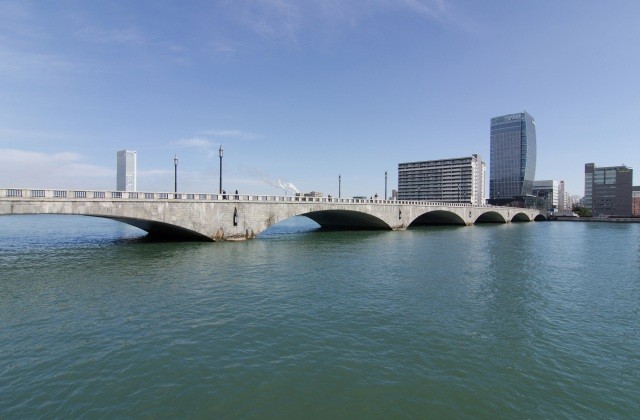
The Bandai Bridge is a solid stone arch bridge crossing over the Shinano River. Decorations within the granite give the bridge a majestic appearance.
The current bridge is the third incarnation that was reconstructed in 1929 for the city’s modernisation. The Bandai Bridge was designated an Important Cultural Property in July 2004. Following Tokyo’s Nihonbashi Bridge, this was the second bridge on the national highway designated as an Important Cultural Property. The bridge is 306.9 metres long and 22 metres wide and survived the 1964 Niigata Earthquake. It provides an important transportation link for the local citizens.
The bridge has a broad pedestrian walkway and is best viewed from the promenades along the Shinano River. Take a stroll along one of the promenades or board the waterbus to really enjoy the view of this grand bridge!
The current bridge is the third incarnation that was reconstructed in 1929 for the city’s modernisation. The Bandai Bridge was designated an Important Cultural Property in July 2004. Following Tokyo’s Nihonbashi Bridge, this was the second bridge on the national highway designated as an Important Cultural Property. The bridge is 306.9 metres long and 22 metres wide and survived the 1964 Niigata Earthquake. It provides an important transportation link for the local citizens.
The bridge has a broad pedestrian walkway and is best viewed from the promenades along the Shinano River. Take a stroll along one of the promenades or board the waterbus to really enjoy the view of this grand bridge!
Tsukioka Onsen
A popular hot spring for women promoting beautiful skin
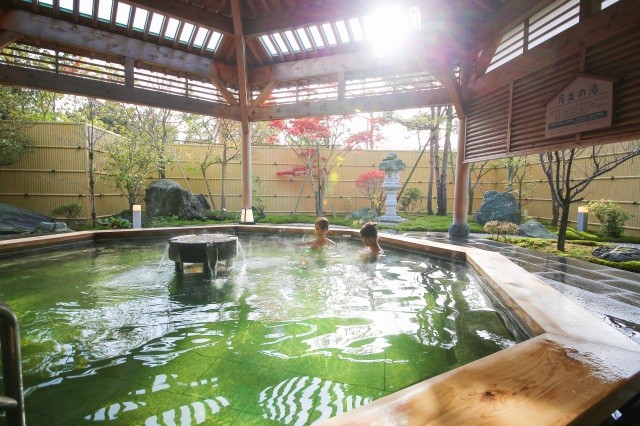
Tsukioka Onsen is famed for its rich sulphuric water with one of the highest sulphur contents of any Onsen in Japan. With exceptionally beautiful emerald green water this hot spring is particularly popular with women as the water is known to promote beautiful skin. The mild alkaline water is smooth on the skin leaving it soft and moist.
During an evening stroll around this hot spring town you will notice the scent of sulphur in the air and may catch a glimpse of a Kimono-clad Geisha dashing under the light of the street lamps. Enjoy a stay at one of the town’s traditional Ryokans (traditional Japanese inns) to really soak up the historic atmosphere.
The town’s charming streets are lined with a variety of traditional shops. Sample a cup of the local Sake, look in on the traditional sweets shops or even try your hand at baking and decorating your own rice crackers. The town also offers unique experiences such as soaking your hands in a special hot spring hand bath, tasting the sulphuric hot spring water or pouring it over the local matchmaking statue to wish for luck in love. Make the most of your Onsen experience with the Yumeguri Tegata Onsen Pass!
During an evening stroll around this hot spring town you will notice the scent of sulphur in the air and may catch a glimpse of a Kimono-clad Geisha dashing under the light of the street lamps. Enjoy a stay at one of the town’s traditional Ryokans (traditional Japanese inns) to really soak up the historic atmosphere.
The town’s charming streets are lined with a variety of traditional shops. Sample a cup of the local Sake, look in on the traditional sweets shops or even try your hand at baking and decorating your own rice crackers. The town also offers unique experiences such as soaking your hands in a special hot spring hand bath, tasting the sulphuric hot spring water or pouring it over the local matchmaking statue to wish for luck in love. Make the most of your Onsen experience with the Yumeguri Tegata Onsen Pass!
Day2
Former Honma Family Residence
Feel the spirit of simplicity and fortitude at the residence of Japan’s richest merchant!
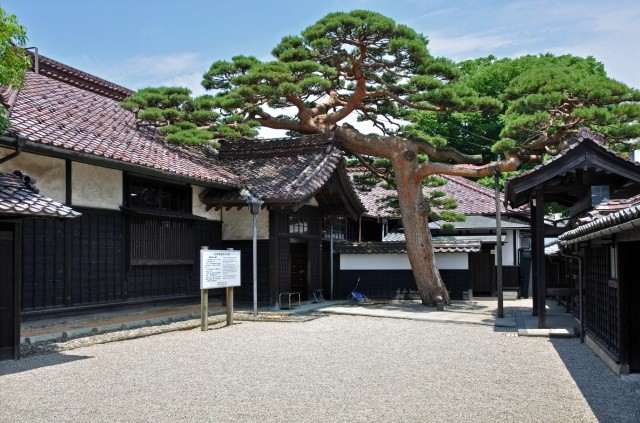
The Honma family was the wealthiest merchant family in Japan between the 17th and mid-20th centuries. Their immense wealth was larger than that of feudal lords and was the envy of people all over Japan. The Honma Residence originally served as regional quarters for visiting shogunate officials. The buildings are a unique fusion of the architectural styles of traditional samurai residences and merchant houses.
The old pine tree covering the roof of the front entrance reflects the spirit of the Honma family: “taking a low profile and being modest”. This spirit based on simplicity and fortitude can be seen through their dedication to the local area where they funded the planting of a barrier of trees to protect the locals’ fields and constructed residences and gardens to give farmers shelter and work even during times of poor harvests.
From late February to early April each year, the Sakata Hinakaido Festival takes place in the area. A collection of “Hina dolls” (dolls for the Girl’s Festival) are displayed at local venues including the Honma Residence and the Honma Museum. Most of the Hina dolls are private personal belongings and the festival offers a rare chance to see these precious traditional dolls. Don’t miss it!
The old pine tree covering the roof of the front entrance reflects the spirit of the Honma family: “taking a low profile and being modest”. This spirit based on simplicity and fortitude can be seen through their dedication to the local area where they funded the planting of a barrier of trees to protect the locals’ fields and constructed residences and gardens to give farmers shelter and work even during times of poor harvests.
From late February to early April each year, the Sakata Hinakaido Festival takes place in the area. A collection of “Hina dolls” (dolls for the Girl’s Festival) are displayed at local venues including the Honma Residence and the Honma Museum. Most of the Hina dolls are private personal belongings and the festival offers a rare chance to see these precious traditional dolls. Don’t miss it!
Sankyo Soko Storehouse
These functioning rice storehouses form a picturesque view with their black wooden walls lined with a row of Keyaki trees
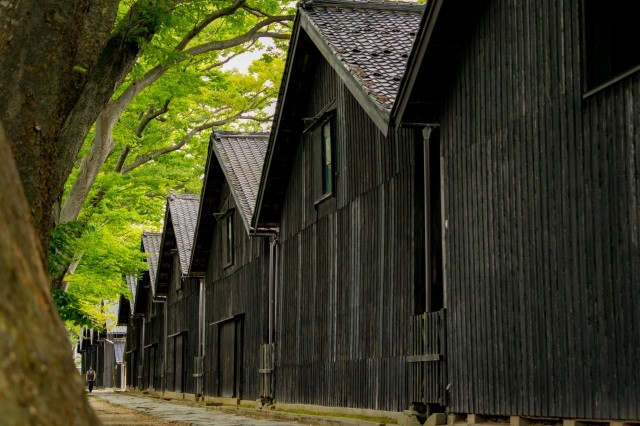
Built in 1893, the Sankyo Soko Storehouses continue to function today as rice storehouses. The impressive wisdom of the builders can be seen in such things as the double roof used for insulating heat and the row of Keyaki trees planted behind the storehouses to protect them from the afternoon sun and strong winds. Today the storehouses continue to protect the rice contained within them from heat and moisture using the same traditional methods.
The row of storehouses emanates a nostalgic atmosphere and maintains traces of the years when the area flourished as a port for rice shipments. The storehouses are a popular photography location as well as a favourite location for shooting movies and TV dramas. The storehouses gained fame after appearing in NHK’s popular TV drama series “Oshin”.
Standing beside the Mogami River the storehouses create fascinating views in combination with the port and small wooden rice-shipping boats. Their triangular roofs and white walls reflect serenely on the river water. On the other side of the storehouses is a parallel row of Keyaki trees which in combination with the stone pavements and the storehouses’ black wooden walls create more photogenic vistas! Visitors can enjoy pleasant scenes throughout the year including verdant greens of the Keyaki trees in summer, snow-capped triangular roofs in winter, illuminated storehouses at dusk and glittering stone pavements in the rain. The incredible views change depending on the season and time of day.
Regional products including tasty rice and local sake are available at the adjoining Sakata Yumenokura. The on-site restaurant offers dishes made with fresh seafood and harvests from the Shonai plains. The terrace seats are a lovely option to enjoy a drink and a meal on fine days.
A thematic journey in the Tohoku region:Okuno Hosomichi・The History of Michinoku
The row of storehouses emanates a nostalgic atmosphere and maintains traces of the years when the area flourished as a port for rice shipments. The storehouses are a popular photography location as well as a favourite location for shooting movies and TV dramas. The storehouses gained fame after appearing in NHK’s popular TV drama series “Oshin”.
Standing beside the Mogami River the storehouses create fascinating views in combination with the port and small wooden rice-shipping boats. Their triangular roofs and white walls reflect serenely on the river water. On the other side of the storehouses is a parallel row of Keyaki trees which in combination with the stone pavements and the storehouses’ black wooden walls create more photogenic vistas! Visitors can enjoy pleasant scenes throughout the year including verdant greens of the Keyaki trees in summer, snow-capped triangular roofs in winter, illuminated storehouses at dusk and glittering stone pavements in the rain. The incredible views change depending on the season and time of day.
Regional products including tasty rice and local sake are available at the adjoining Sakata Yumenokura. The on-site restaurant offers dishes made with fresh seafood and harvests from the Shonai plains. The terrace seats are a lovely option to enjoy a drink and a meal on fine days.
A thematic journey in the Tohoku region:Okuno Hosomichi・The History of Michinoku
Lunch in Sakata city
Hiyoriyama Park
Learn about the historic port town of Sakata at this park with an iconic white lighthouse and traditional white sailing ship!
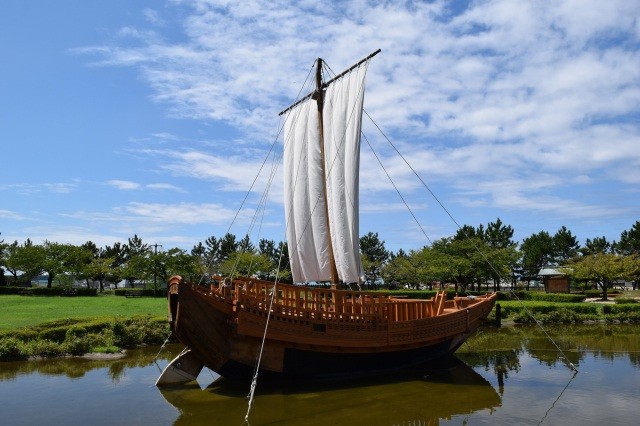
Hiyoriyama Park is a historic park in the port town of Sakata. The park is a popular scenic location for cherry blossom viewing and offers dazzling views of the sunset over the Sea of Japan.
The chalk-white hexagonal lighthouse, one of Japan’s oldest wooden lighthouses, is a popular symbol of Hiyoriyama Park. The lighthouse was founded in 1813 to guide Kitamaebune cargo vessels at night and was a focus for prayers for safe journeys by the boatmen and shipping agents who regularly came to the port of Sakata.
The other well-known feature of the park is a Kitamaebune boat with a beautiful white sail. The half-scale model ship is the largest in Japan. Kitamaebune boats were also known as Sengokubune (1,000-koku vessels) because they had space for 1,000 koku (150 tons) of rice. The largest Kitamaebune with only one square sail could carry 2,400 koku (360 tons) of cargo.
The Kitamaebune ships also carried out extensive trade at ports along the route. It is said that a return journey between Osaka and Hokkaido could bring a profit of 1,000 ryo (Japan’s pre-Meiji gold currency). Today the model ship informs visitors about the history of the period and the boatmen’s dreams of making their fortune.
The park has a lovely strolling path with 29 monuments introducing writers and artists who visited Sakata. Enjoy learning about the history of this port town while taking a pleasant walk!
The chalk-white hexagonal lighthouse, one of Japan’s oldest wooden lighthouses, is a popular symbol of Hiyoriyama Park. The lighthouse was founded in 1813 to guide Kitamaebune cargo vessels at night and was a focus for prayers for safe journeys by the boatmen and shipping agents who regularly came to the port of Sakata.
The other well-known feature of the park is a Kitamaebune boat with a beautiful white sail. The half-scale model ship is the largest in Japan. Kitamaebune boats were also known as Sengokubune (1,000-koku vessels) because they had space for 1,000 koku (150 tons) of rice. The largest Kitamaebune with only one square sail could carry 2,400 koku (360 tons) of cargo.
The Kitamaebune ships also carried out extensive trade at ports along the route. It is said that a return journey between Osaka and Hokkaido could bring a profit of 1,000 ryo (Japan’s pre-Meiji gold currency). Today the model ship informs visitors about the history of the period and the boatmen’s dreams of making their fortune.
The park has a lovely strolling path with 29 monuments introducing writers and artists who visited Sakata. Enjoy learning about the history of this port town while taking a pleasant walk!
Yunohama Onsen
Enjoy the stunning sunset view over the sea while relaxing in an open-air bath at this Onsen!
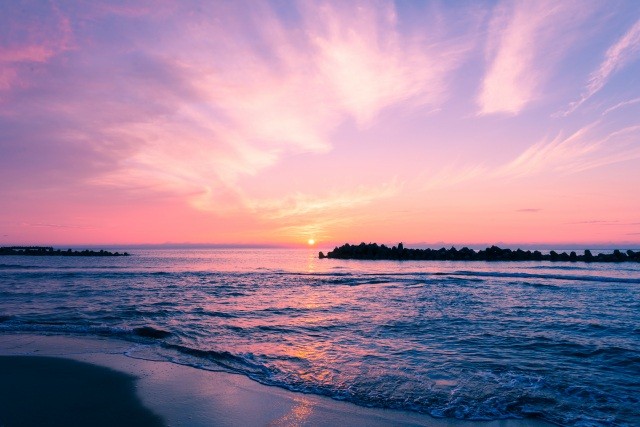
Yunohama Onsen offers luxurious hot spring experiences at hotels facing the Sea of Japan, the perfect location to enjoy a spectacular sunset view while taking a relaxing soak in an open-air bath. The view of the blazing sun setting over the Sea of Japan is awe-inspiring, colouring everything in an orange glow as the sun fades into the sea. Yunohama Onsen is located on the Yunohama Coast whose stunning sunset views have been officially recognised as one of Japan’s 100 most beautiful.
After an excellent hot spring experience, enjoy some of the local specialties made with seafood from the Sea of Japan and fresh vegetables from the rich Shonai plains including bamboo shoots, Dadacha (a type of Edamame) beans, melons and warm fish soup.
The Yunohama Coast is also said to be the birthplace of Japanese surfing. There is a record that local youths rode waves on boards during the Edo period (1603-1868). The vast and shallow stretch of beach is perfect for bathing and water sports.
The nearby Tsuruoka City Kamo Aquarium is nationally renowned for its incredible display of jellyfish. Come and enjoy an ideal coastal holiday!
After an excellent hot spring experience, enjoy some of the local specialties made with seafood from the Sea of Japan and fresh vegetables from the rich Shonai plains including bamboo shoots, Dadacha (a type of Edamame) beans, melons and warm fish soup.
The Yunohama Coast is also said to be the birthplace of Japanese surfing. There is a record that local youths rode waves on boards during the Edo period (1603-1868). The vast and shallow stretch of beach is perfect for bathing and water sports.
The nearby Tsuruoka City Kamo Aquarium is nationally renowned for its incredible display of jellyfish. Come and enjoy an ideal coastal holiday!
Day3
Senshu Park
Autumn leaves of Kubota Castle
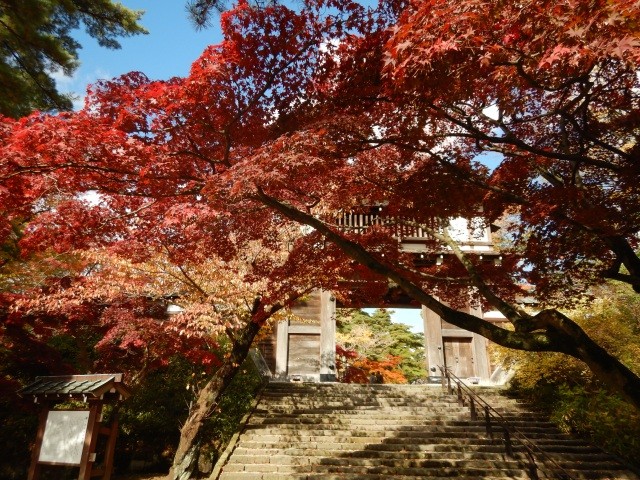
Senshu Park is the site of the 200,000 stone castle of Satake of the Akita Domain and is also a stunning location when the autumn leaves are in full bloom from mid-October to early November. <br> From here you can enjoy views of Akita City from the observation room of the Osumi-Yagura turret. Check out the view with Kubota Castle Front Gate and the Satake Historical Material Museum for a memorable autumn view.
Lunch in Akita city
Inaniwa Udon Noodles
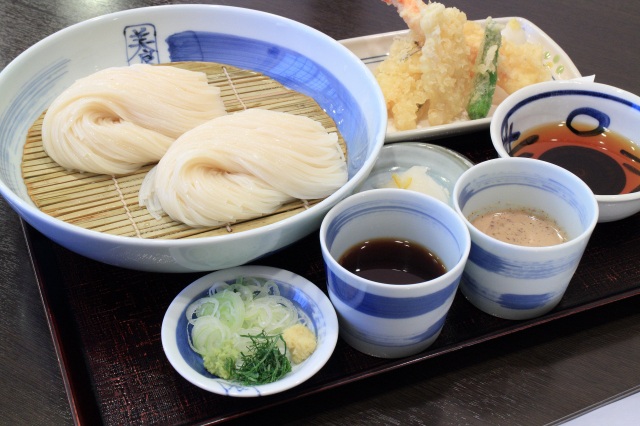
Inaniwa-cho in the city of Yuzawa in Akita prefecture is the hometown of Inaniwa Udon noodles. The smooth, chewy noodles are hand-made using the traditional processes of kneading, pounding and stretching. Praised nationally as one of Japan’s three best noodles, Inaniwa Udon was used as a traditional offering to landlords and as gifts between feudal lords travelling to and from Edo (Tokyo) during the Edo period. In addition to the city of Yuzawa, there are a number of restaurants throughout Akita offering popular Inaniwa Udon.
Search Restaurants
Search Restaurants
Ogashinzan Folklore Museum
The traditional folk event "Namahage of Oga" demonstration is so powerful!
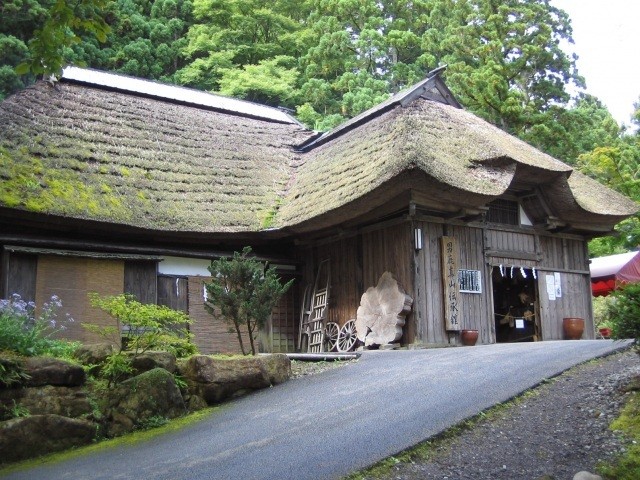
“Namahage” is a folk ritual performed throughout the Oga Peninsula and surrounding areas. Each New Year’s Eve fierce demons known as Namahage visit each house to frighten misbehaved children. Despite their scary appearance, the Namahage are gods bringing the local people warnings against laziness as well as blessings for the wellbeing of their families and rich harvests from the mountains and the sea for the coming year.
The Ogashinzan Folklore Museum gives visitors the chance to learn about and experience the Namahage folklore tradition. The museum is in a traditional thatched-roof farmhouse known as Magariya (“bent house”) connected in an L-shape with a horse stable. Visitors seat themselves in the tatami-floored room beside a traditional “Irori” fireplace while listening to an explanation of the Namahage and viewing a live performance.
The fierce Namahage, stomping around the room and crying out for badly behaved children, are vigorous and frightening. Be sure to collect some of the fallen straw from the Namahage’s costumes which is said to be a charm against evil spirits. Please don’t pull at the costumes too forcefully though!
The nearby Namahage Museum offers a variety of displays on the Namahage and offers visitors the chance to dress-up in a Namahage costume. Enjoy discovering the folk culture of Namahage, officially recognised as a UNESCO Intangible Cultural Heritage!
The Ogashinzan Folklore Museum gives visitors the chance to learn about and experience the Namahage folklore tradition. The museum is in a traditional thatched-roof farmhouse known as Magariya (“bent house”) connected in an L-shape with a horse stable. Visitors seat themselves in the tatami-floored room beside a traditional “Irori” fireplace while listening to an explanation of the Namahage and viewing a live performance.
The fierce Namahage, stomping around the room and crying out for badly behaved children, are vigorous and frightening. Be sure to collect some of the fallen straw from the Namahage’s costumes which is said to be a charm against evil spirits. Please don’t pull at the costumes too forcefully though!
The nearby Namahage Museum offers a variety of displays on the Namahage and offers visitors the chance to dress-up in a Namahage costume. Enjoy discovering the folk culture of Namahage, officially recognised as a UNESCO Intangible Cultural Heritage!
Namahage Museum
The collection of 150 hand-carved Namahage masks is a must see! Enjoy dressing up in a real Namahage costume!
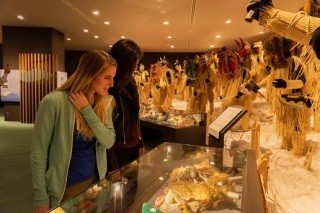
Namahage is a traditional folk event on the Oga Peninsula. Namahage wears an ogre mask and cries out, "Are there any crying children?" and is mistaken for a bad guy who makes children cry.In truth, however, he is a god who comes every New Year's Eve to warn people against laziness and to bring good health, good harvest in the fields, good harvest in the mountains, and good harvest in the sea.
The Namahage Museum introduces the history and culture of Namahage. The Namahage display corner features 150 diverse masks that were actually used in each village. In the Lore Hall, the movie "One Night of Namahage," which introduces the Namahage culture on New Year's Eve, is shown.
There is a corner where visitors can dress up in Namahage costumes and have their picture taken, and a souvenir corner where Namahage goods can be purchased. If you are lucky, you can watch a Namahage carver demonstrate hand-carving masks. (This event is held irregularly).
Next to the Namahage Museum is the Oga Mayama Folklore Museum, where Namahage demonstrations can be seen. Visit both and enjoy the Namahage, which has been registered as a UNESCO Intangible Cultural Heritage.
The Namahage Museum introduces the history and culture of Namahage. The Namahage display corner features 150 diverse masks that were actually used in each village. In the Lore Hall, the movie "One Night of Namahage," which introduces the Namahage culture on New Year's Eve, is shown.
There is a corner where visitors can dress up in Namahage costumes and have their picture taken, and a souvenir corner where Namahage goods can be purchased. If you are lucky, you can watch a Namahage carver demonstrate hand-carving masks. (This event is held irregularly).
Next to the Namahage Museum is the Oga Mayama Folklore Museum, where Namahage demonstrations can be seen. Visit both and enjoy the Namahage, which has been registered as a UNESCO Intangible Cultural Heritage.
Day4
Nyudozaki
A spectacular view at the western end of the Oga Peninsula, on the 40th parallel of north latitude!
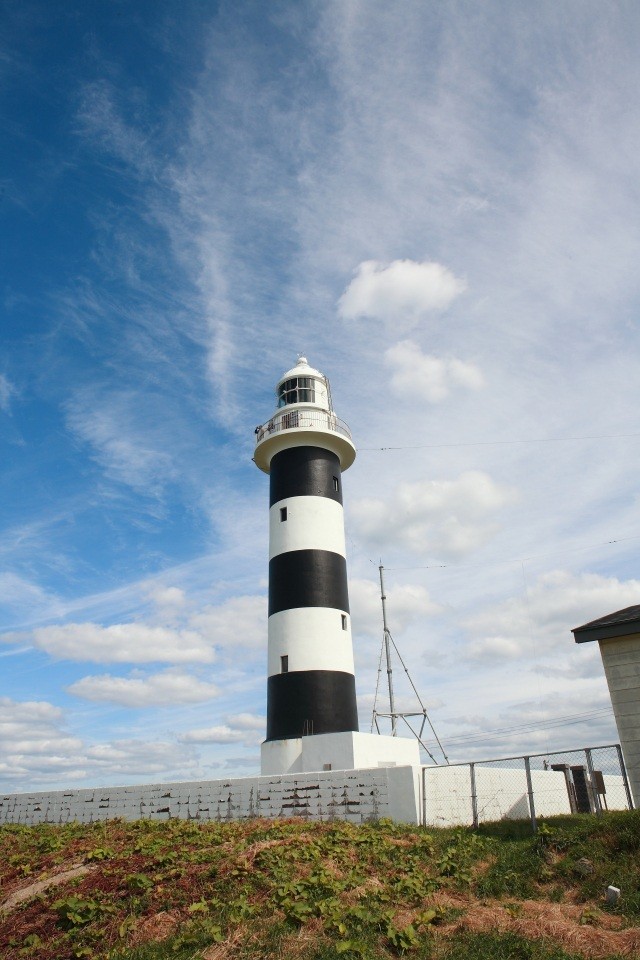
Famous for its scenic beauty, it is an exquisite contrast of green land, blue sea, and sky that captivates the hearts of all who see it.When you come here, please spend a peaceful time on the expanse of grass while looking at the panoramic view of the sea.Be sure to take a peek at the monument on the 40 degree north latitude line, which is made of andesite produced from the Oga Peninsula.Irimizaki Lighthouse, with its impressive black-and-white striped pattern, has been selected as one of the "50 Best Lighthouses in Japan.Of the more than 3,000 lighthouses in Japan, only 16 of them are climbable.Near the lighthouse, there are many restaurants and souvenir stores where visitors can enjoy the Oga Peninsula's famous Ishiyaki cuisine, as well as an undersea fluoroscope boat that allows visitors to observe the ocean floor through a glass window at the bottom of the boat.
GOAL
